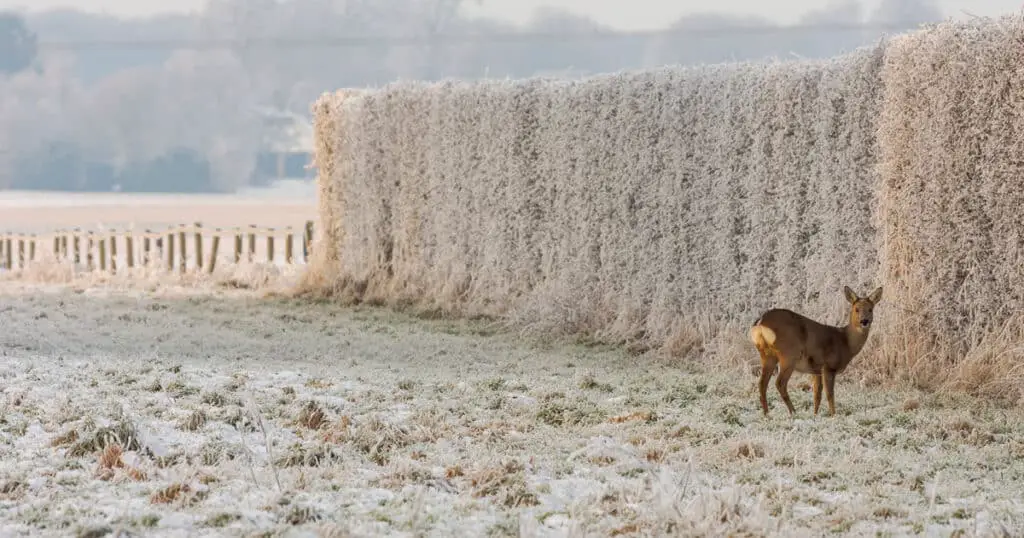Do you have a large deer population in your area? Take measures to keep these cervids away from your garden. If you don’t, any flowers and other plants that deer like to eat (and there are many) will be at risk. And if you’re considering investing in a hedge, the last thing you’ll want is to have your investment devoured by the local deer herd. Keep reading to find out our favorite deer resistant hedges.
We’ll talk about the characteristics of these hedges and why each may (or may not) do well in your region.
You’ll find out why it’s a good idea to plant a deer resistant hedge. Most importantly, we will list deer resistant hedges that you can include on your property.
Why Plant a Deer Resistant Hedge?
A hedge can act as a fence for your property, keeping away deer. But there’s nothing worse than investing in a hedge only to have the bottom half of it get defoliated and eaten by deer every year.
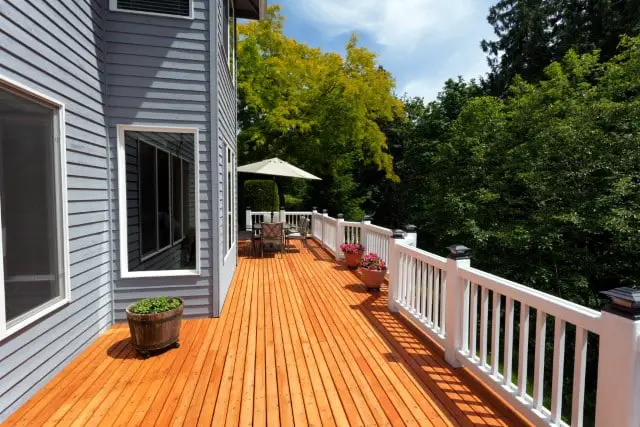
Let’s learn what deer like to eat and the plants that perform best as hedges and privacy screens in areas where there is a large deer population.
List of Deer Resistant Hedges
Think about planting one of these deer resistant hedges if you live in an area with a high deer population. Of course, you’ve got to know your growing zone and climate so you know which hedge would be appropriate.
- Japanese Pieris
- Inkberry
- Chinese Juniper
- Mountain Laurel
- Common Boxwood
- Eastern Red Cedar
Below we’ll explore the unique qualities and growth habit of each of these hedge plants. You can find some photos of each plant as well.
Japanese Pieris
You’ll sometimes hear people call this shrub the Andromeda. Consider this plant for your garden if you want a shrub that can grow as tall as 10 feet.
The Japanese Pieris shrub is classified as broadleaf evergreen.
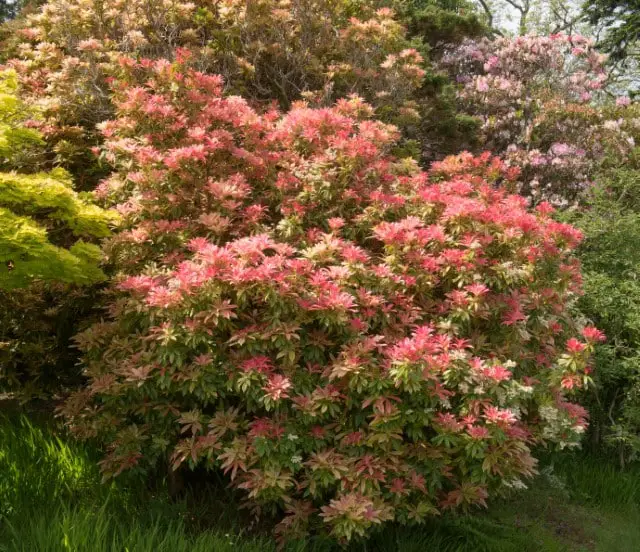
One of the best features of the Japanese Pieris is its attractive dark green appearance. The leaves are glossy.
This hedge is the perfect addition if you want to bring pollinators (such as bees) into your garden. That is because it grows white flowers early on in spring.
The Japanese Pieris shrub requires rich soil with a lot of nutritious organic content. The soil should also have an acidic pH. This shrub does best anywhere from partial to full shade.
Deer dislike the Japanese Pieris’s scent, so they’ll stay away from this plant. It should also help keep deer away from your property (and other plants) as a whole.
The Japanese Pieris should be hardy as long as you grow it between USDA zones 5 and 8.
A Japanese Pieris may measure between 6 and 8 feet wide when it’s mature. When it comes to height, the Japanese Pieris is impressive. It can grow as high as 9 to 12 feet tall.
Inkberry
The Inkberry hedge is a type of holly. It is an evergreen plant, and it’s quite easy to grow.
You won’t have to worry much about the moisture level of your soil, as this plant is able to thrive as well in wet soil as it does in well-drained.
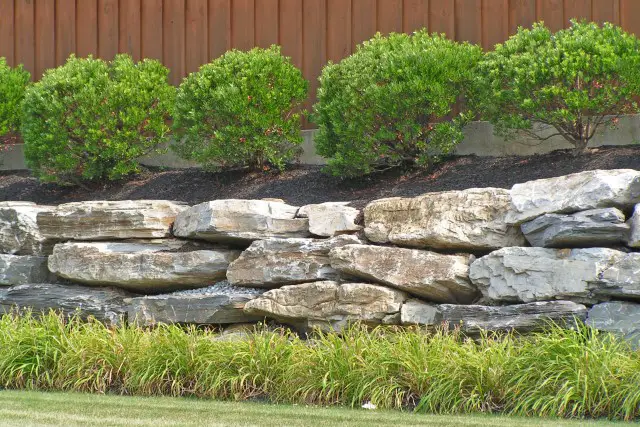
Plant and grow this shrub species in either partial shade or full sun. You should give it full sun, however, if you want it to really thrive.
As long as you don’t have your heart set on a neat hedge, Inkberry may be a good choice for you. Deer dislike it, so you can use it as a barrier to help keep deer away.
Make sure your soil has an acidic pH and is consistently moist if you want to plant Inkberry on your property.
One drawback of Inkberry is that it’s hard to predict how high it will grow, and some parts of it may grow higher than others. Different varieties of Inkberry may grow to different heights, as well.
One of the wonderful features of Inkberry is how it draws songbirds to your property. That is because of the fruit that grows on Inkberry.
Inkberry leaves are deep green in color, and they have a glossy finish.
Do you live in USDA zones 4 through 10? Inkberry should be hardy on your property.
It blooms in the spring, and it may grow as high as five to eight feet.
Chinese Juniper
Make sure you plant an appropriate variety of Chinese Juniper if you want to grow it as a shrub.
This is important, as there are certain kinds of Chinese Juniper that will become full trees. Chinese Juniper is known for keeping away deer.
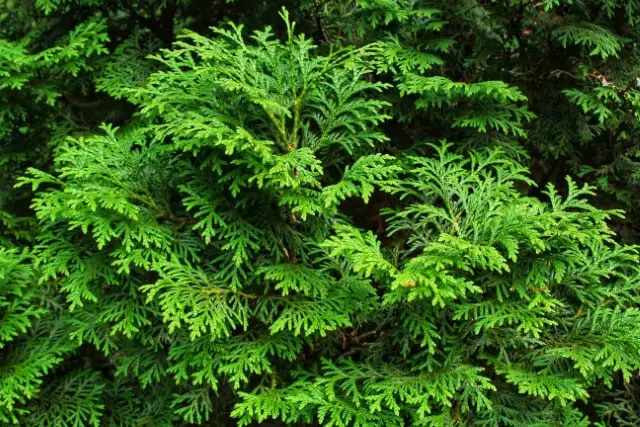
This is a needled evergreen shrub. Have you ever seen an Eastern red cedar? It’s quite similar. Chinese Juniper may be a good choice if you live in a region with dry soil or where drought is common.
Mountain Laurel
Mountain Laurel is another option for a deer-resistant shrub. You need soil with an acidic pH for this hedge.
Have you ever seen rhododendron leaves? Mountain Laurel leaves are quite similar in their deep green color and textured feel.
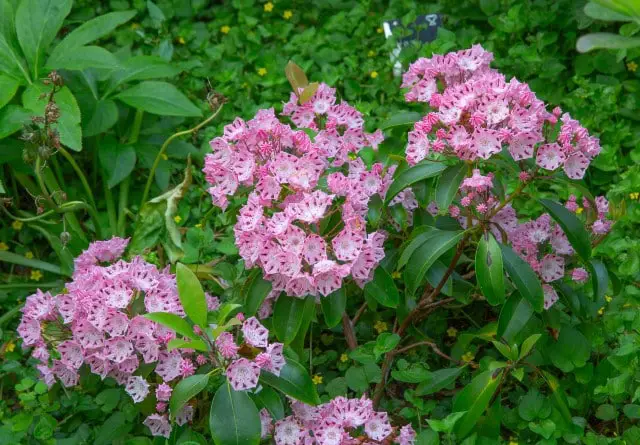
Mountain Laurel has pretty pink and/or white flowers. They grow in clusters that can be as wide as six inches.
You can expect a mature Mountain Laurel to grow as tall as between 6 and 15 feet. It can grow to between 6 and 15 feet in width.
Mountain Laurel hedge thrives in USDA zones 4 through 9.
Common Boxwood
Common Boxwood is an especially popular choice as a deer-resistant privacy shrub. It should flourish as long as you can offer relatively good protection and shelter.
You can plant Common Boxwood in both shady and full sun areas.
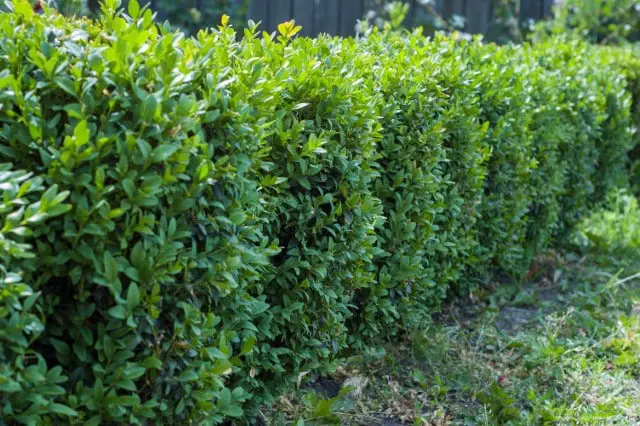
You shouldn’t plant common boxwood if there are severe winters in your region. That kind of weather will probably cause permanent damage to this shrub.
If you don’t have your heart set on a flowering shrub, you will be happy with the lovely green of Common Boxwood foliage.
The Common Boxwood requires frequent shearing and pruning, so keep this in mind. This plant stands up well to this kind of stress.
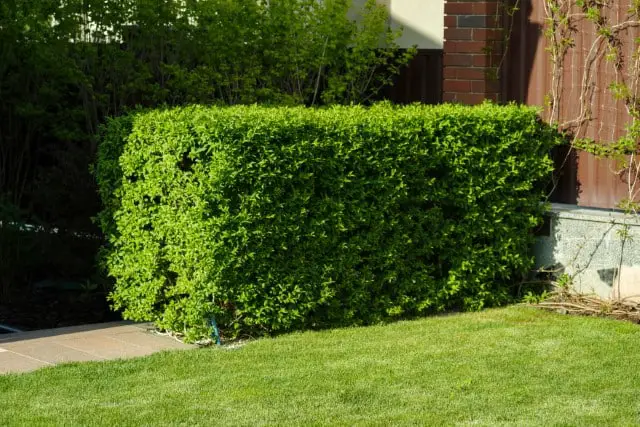
You can expect Common Boxwood to grow to between 15 and 20 feet in width and height.
If you live anywhere between USDA hardiness zones 5 and 8, you should find that Common Boxwood can flourish on your property.
Eastern Red Cedar
As long as you won’t need to have your Eastern Red Cedar near crabapples or apples, it should be fine. If it will be near those plants, don’t include it in your garden.
That is because being near crabapples or apples may cause the Eastern Red Cedar to end up with cedar apple rust.
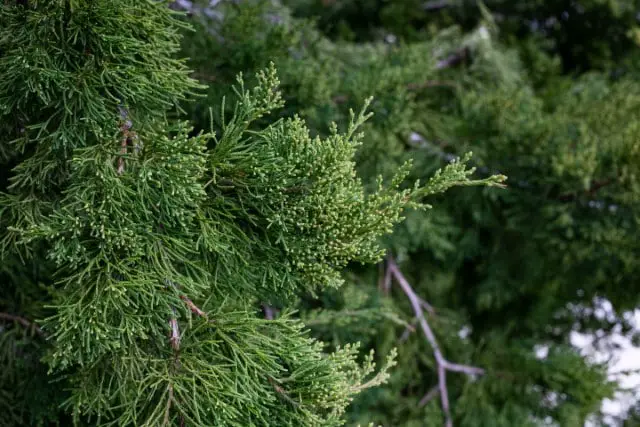
The Eastern Red Cedar is quite flexible in its requirements. It stands up to drought quite well.
This hedge prefers dry soil and full sun.
Cones grow on the Eastern Red Cedar that should attract Cedar Waxwings and other kinds of songbirds to your property.
This plant is a great choice for USDA hardiness zones 2 through 9.
Final Thoughts: Deer Resistant Hedges
Clearly, there are many deer resistant hedges that you can plant in your garden.
Take a look at the list we have outlined above, and take your time choosing the best hedge to help keep deer away from your garden.
Many homeowners enjoy planting a hedge instead of installing a fence. After all, it’s usually much more beautiful and creates curb appeal for your property.
Planting a shrub that is deer-resistant will make deer not even want to get onto your property. This gives it an advantage over a fence, as deer may still try to jump over that kind of barrier.

